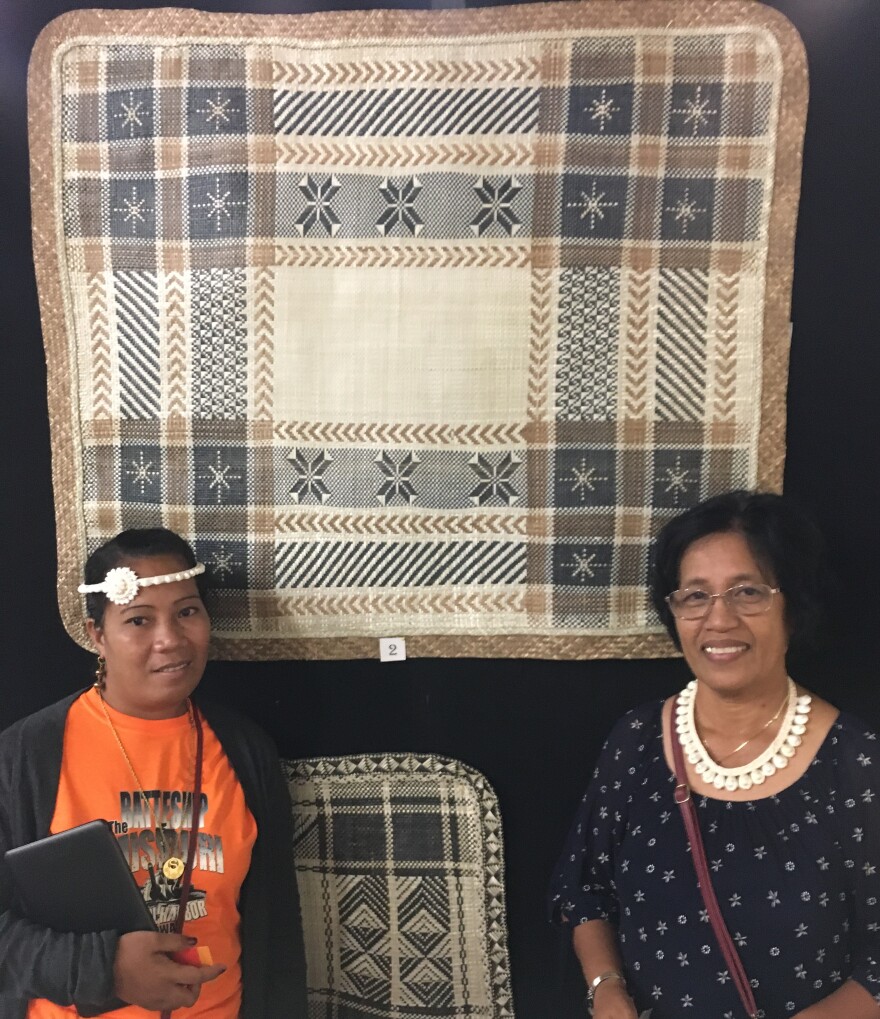A Pacific Island weaving tradition that nearly went extinct is now making a comeback. Finely woven Marshallese clothing mats made of lauhala or pandanus leaves were on display this weekend at the Bishop Museum. HPR’s Ku?uwehi Hiraishi was there and filed this report.
A little more than a decade ago, 50 finely woven Marshallese pandanus mats or jaki-ed were uncovered in the Bishop Museum repository. These rare mats were 150 to 200 years old, says Irene Taafaki, Director of the University of the South Pacific in the Marshall Islands.

“The Bishop Museum kindly gave us photographs of the jaki-ed in their collection, and we made it into a presentation in Majuro in 2006,” says Taafaki, “And the women were stunned and overawed because they didn’t realize that their forbearers had created such beautiful work.”
Like many Pacific Islanders, the Marshallese wove pandanus leaves into jaki or mats used for sleeping, sitting, and traditional women’s clothing. But since World War II, Marshallese women began wearing Western clothing.

“Just like in Hawai?i the shift from traditional practice to using Western materials. You know the lost of the traditional weaving techniques was more evident because they put that aside and they took on Western clothing that they didn’t have to make the clothes anymore,” says Marques Hanalei Marzan, a cultural advisor and fiber arts specialist at the Bishop Museum.

“In the late 1990s, there were only four weavers left who knew how to weave this kind of traditional clothing,” says Marzan.
Taafaki helped spearhead the Marshallese Weaving Cultural Restoration Project 12 years ago. The project includes an apprenticeship program in the Marshall Islands and an annual exhibition and auction for participating weavers.


Jawin Jerilong is from Ebon in the Marshall Islands. She is one of 15 Marshallese weavers whose jaki-ed were on display for the exhibition and auction held this year for the first time at the Bishop Museum.
Jerilong says the inspiration for her mats came from the pride she has for her home island. Ione deBrum, Mayor of Ebon also flew in for the exhibition.
“I feel very, very proud that my island is represented here and I hope that this will encourage young girls like her to do more of this,” says deBrum.
Since the project began in 2006, the Marshallese weaving community has grown from four to more than 200 women throughout the Marshall Islands.
For a virtual tour of jaki-ed in the Bishop Museum collection and other museum collections around the world, visit ClothingMatsOfTheMarshalls.com




